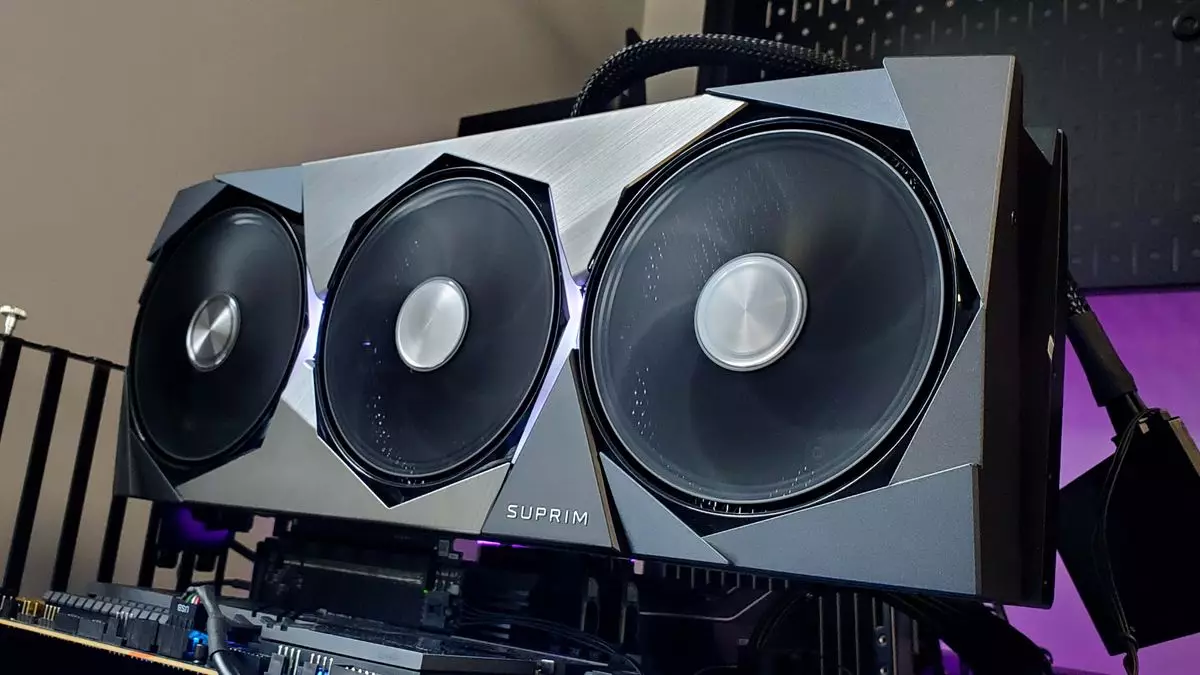The recent launch of Nvidia’s RTX 50-series can only be described as a letdown that leaves many in the gaming and tech community feeling shortchanged. With stocks running low, prices soaring, and promises of stellar performance only half-fulfilled, the excitement around these new graphics cards has rapidly faded. The initial hype surrounding the RTX series was palpable, with gamers anticipating cutting-edge technology that would redefine their gaming experiences. Instead, what many have encountered are empty store shelves, inflated prices from third-party sellers, and an overwhelming sense of frustration.
Price Reductions: A Glimmer of Hope or A Distraction?
Despite the overwhelming disappointment surrounding the launch, there’s news on the horizon: Nvidia has implemented price reductions for its Founders Edition models of the RTX 50-series in select regions, primarily Europe and the UK. Yes, you read that correctly – a price drop! However, before anyone gets too excited, it’s crucial to note that these reductions apply only to certain models and, importantly, only to the Founders Edition line, which does not universally extend to the popular RTX 5070 Ti. This half-hearted price cut merely serves to highlight the inconsistency in availability and the overall confusion surrounding the pricing dynamics in the GPU market.
The financial context underpinning these reductions is undeniably tied to the fluctuating value of the US dollar, creating a compelling narrative that suggests that the prices were, in fact, inflated due to currency shifts rather than intrinsic value increases of the GPUs themselves. For example, customers in Germany are witnessing a relatively minor price drop of around 4.3% for models that have seen a reduction. In the UK, the RTX 5070 is now starting at £529, down from £539, while the impressive RTX 5090 has dropped to £1,889 from £1,939. However, some models, like the RTX 5070 Ti, remain untouched, illustrating an underlying issue where the overall demand and availability have stunted progress toward affordability.
Where Are the GPUs? Supply Chain Struggles Persist
Keen observers will note that while Nvidia speaks about increasing supply during earnings calls, in practice, the situation is far from favorable. The cry for better availability and accessible pricing rings hollow as the shelves remain largely bare. A cursory click on any RTX 50-series Founders Edition card often reveals a frustrating “out of stock” sign, an ironic twist that diminishes the significance of any price correction. It’s one thing to announce discounts; it’s another entirely to follow through with sufficient inventory to satisfy demand.
As it stands, retailers have resorted to inflating prices above the suggested retail value (MSRP) for the scant supply available, creating a bizarre supply-demand paradox that leaves consumers scratching their heads. With a thriving GPU black market indicative of deeper issues, one has to wonder whether these price drops truly reflect a meaningful change or simply a temporary maneuver to appease frustrated customers.
The Competition: AMD’s Resurgence
In stark contrast to Nvidia’s story lies AMD, a competitor that is quietly gaining traction in the market. With reports of more than 200,000 sales of its RX 9070 and RX 9070 XT cards, AMD appears to be capitalizing on Nvidia’s missteps. Although AMD’s pricing and stock issues resemble Nvidia’s predicament, their ability to move substantial inventory is telling about consumer confidence amid the turmoil engulfing the GPU market. It raises questions about Nvidia’s long-term strategy and the potential for continued dominance in a field that is quickly becoming competitive.
As the industry trudges on, the uncertainty surrounding GPU availability and pricing is likely to persist. The tech-savvy consumer is left with the burden of navigating this convoluted market, where misinformation and limited supply reign supreme. With dynamic currency influences and competitors nipping at their heels, Nvidia must find a way to rectify its supply chain inefficiencies and restore faith among consumers—if they want to reclaim their crown as the leading force in the GPU landscape.

